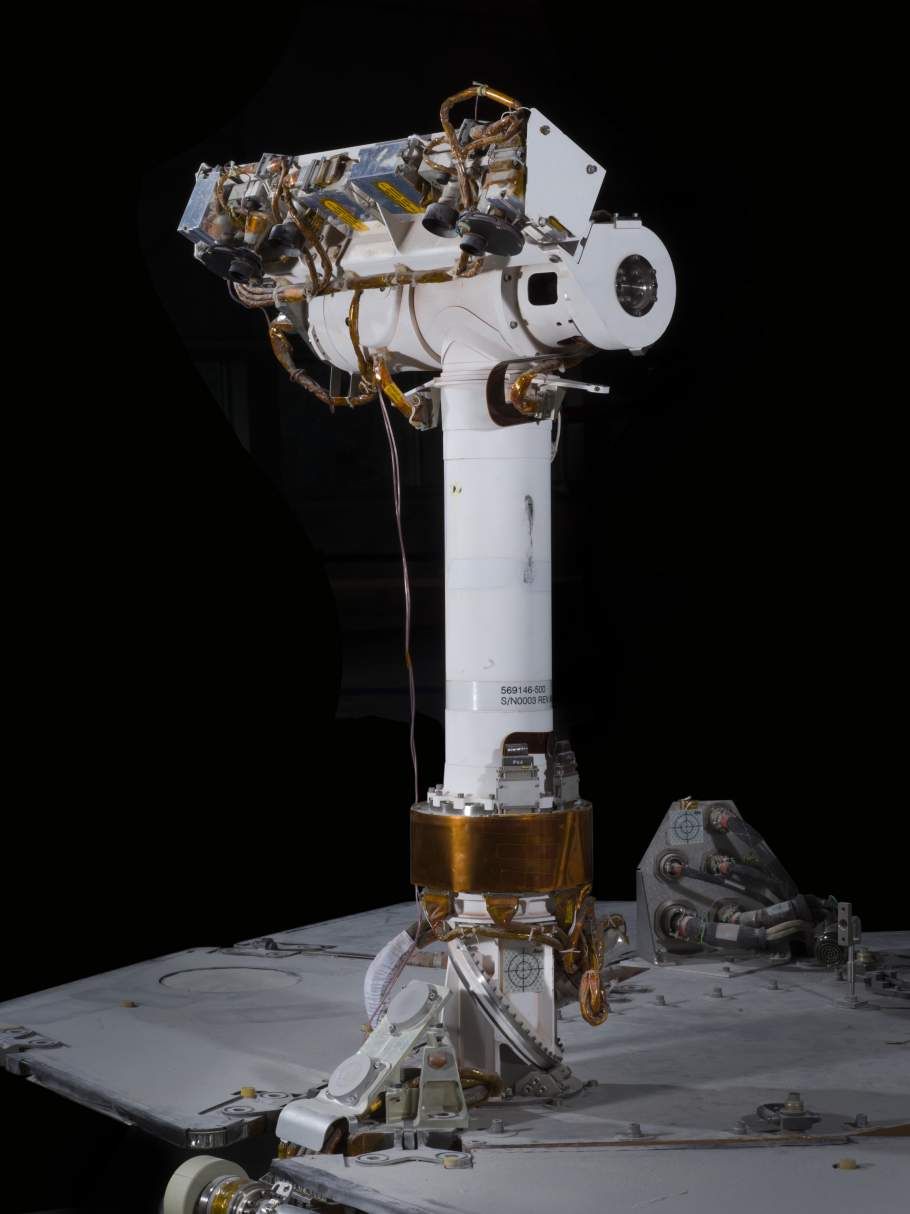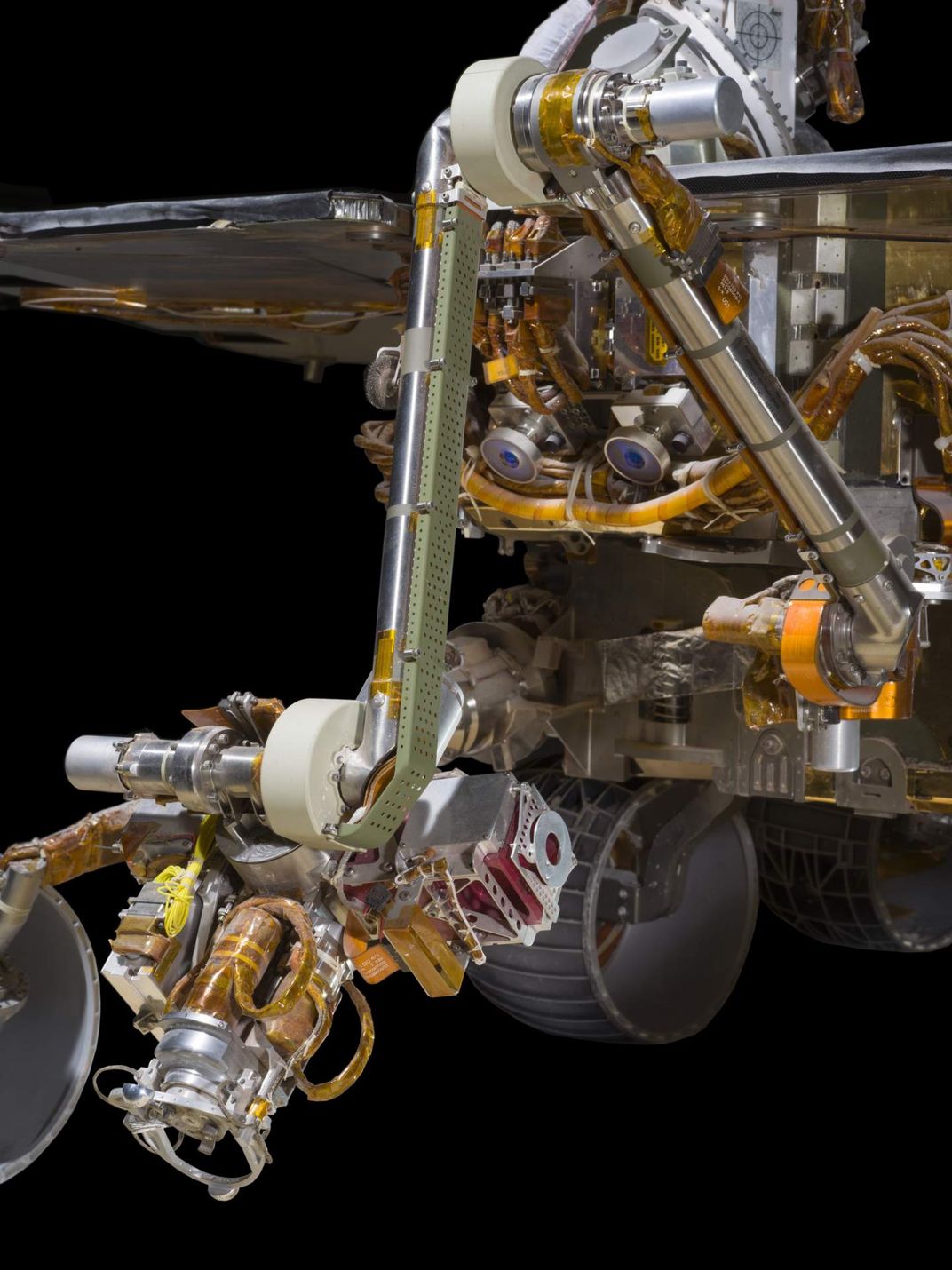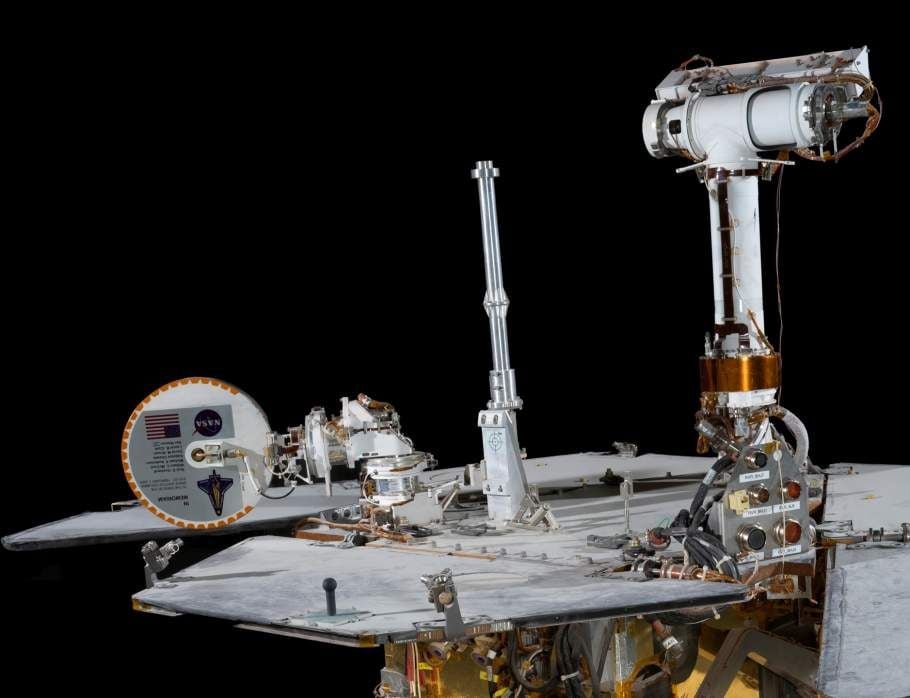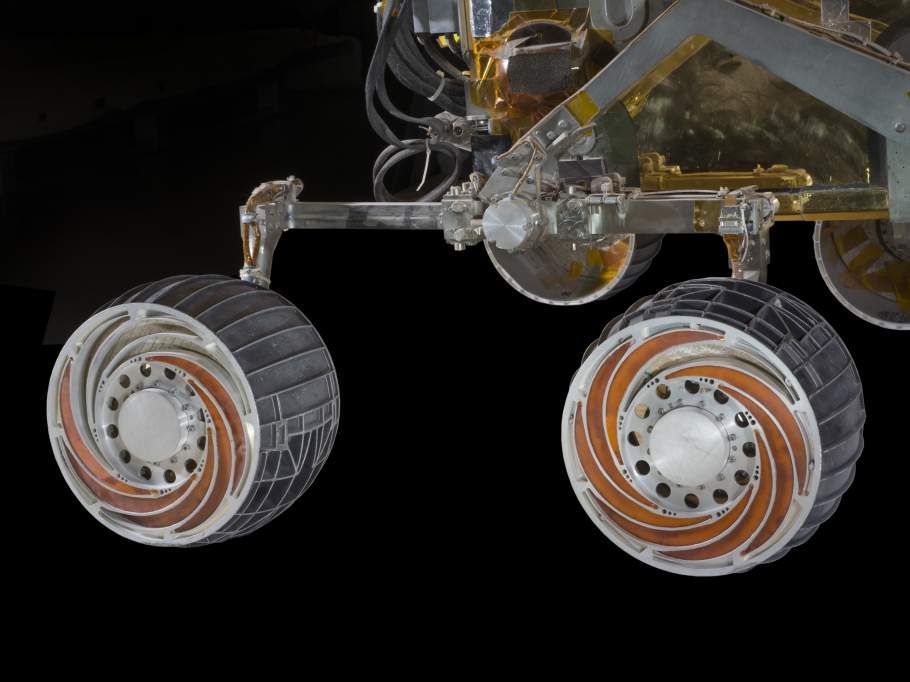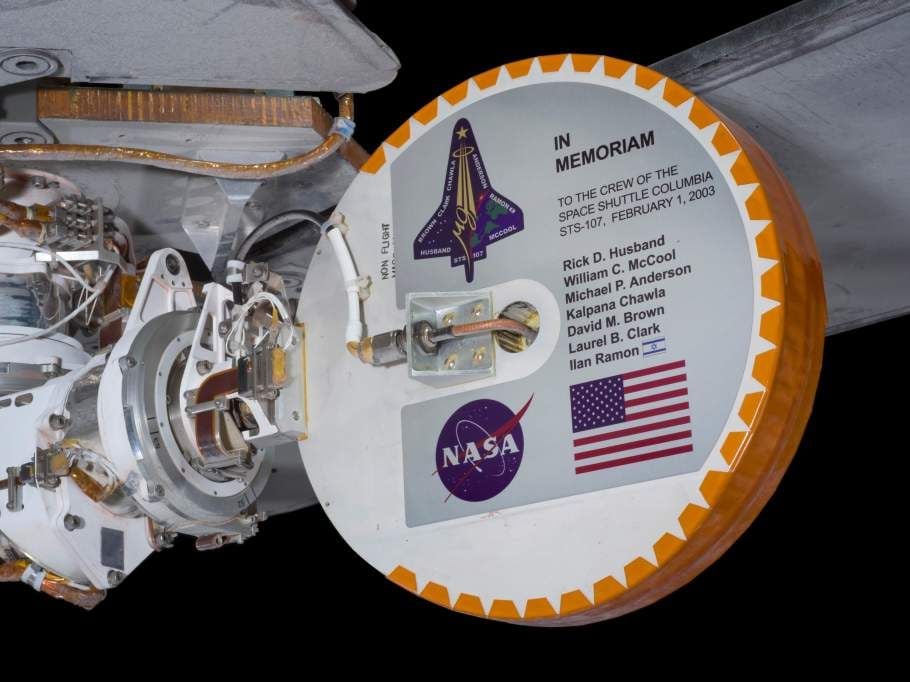A Mars Rover Lands in Virginia
A new Mars rover has landed at the Museum’s Udvar-Hazy Center in Chantilly, Virginia. The Mars Exploration Rover (MER) Surface System Test-Bed (SSTB) is nearly identical to the MER twin rovers Spirit and Opportunity that landed on Mars in 2004. What makes the SSTB different, however, is that it was designed for use on Earth.
:focal(500x375:501x376)/https://tf-cmsv2-smithsonianmag-media.s3.amazonaws.com/blogging/featured/Rover.jfif)
A new Mars rover has landed at the National Air and Space Museum and can be seen on temporary display at the Museum’s Udvar-Hazy Center in Chantilly, Virginia.
The Mars Exploration Rover (MER) Surface System Test-Bed (SSTB) is nearly identical to the MER twin rovers Spirit and Opportunity that landed on Mars in 2004. What makes the SSTB different, however, is that it was designed for use on Earth. Until recently, it spent its life crawling around the In-Situ Instruments Laboratory at NASA’s Jet Propulsion Laboratory (JPL). While Spirit and Opportunity were covered in solar arrays and powered by sunlight, the SSTB was connected by a long tether of cables to a power source and a control panel.
The In-Situ Instruments Laboratory is covered in simulant Martian soil that engineers can shape into small dunes and pits and is often referred to as JPL’s “sandbox.” The engineers at JPL use the sandbox and their outdoor Mars Yard to test rover operations on different terrains and to troubleshoot the problems the rovers encounter on Mars.
Over the 15-year period that Spirit and Opportunity were actively roving on Mars, the SSTB played its own critical role in problem solving whenever the rovers faced physical obstacles or mechanical challenges. When Spirit was stuck and restricted from movement on a site known as “Troy,” for example, the SSTB was placed in simulant soil and rock environments to recreate the predicament of the rover in an attempt to resolve how to free it.
What is the simulant soil made of? In the Mars Yard, the soil is a mixture of beach sand, decomposed granite, brick dust, and volcanic cinders. In the “sandbox,” engineers primarily use crushed garnet, but also employ special recipes to mimic specific soil types encountered on Mars.

A Monument to Spirit and Opportunity
The test-bed rover landed at the Udvar-Hazy Center, but it will ultimately rove over to the Museum on the National Mall, where it will represent the Mars Exploration Rover mission in the Exploring the Planets gallery.
Described as robotic geologists, the MER rovers explored the rocks and soil of Mars around two very different landing sites. Spirit landed at Gusev crater in January 2004, and Opportunity landed soon after in Meridiani Planum.
The MER program ended in February 2019, when Opportunity failed to respond to attempts to revive it after eight months of inactivity. The program was unprecedented both in the amount of time the two rovers spent traversing Mars and in the distance covered. The twin rovers spent a combined 20 years exploring and traveled altogether a distance of nearly 33 miles. They returned over 300,000 raw images of the Red Planet during this time, along with a wealth of scientific data.
Thanks to Spirit, Opportunity, and Curiosity, which followed the twin rovers to Mars in 2012, humans have had robots exploring the Martian surface continuously for the last 16 years. With more rovers on the way now from the United States and China, it is safe to predict that Mars exploration will continue uninterrupted for years to come.
Spirit and Opportunity were not the first rovers to drive around on Mars – this distinction belongs to the Sojourner Rover which landed on Mars in 1997. However, with their geologic instrumentation, their durability, and their unprecedented longevity, Spirit and Opportunity certainly deserve credit for opening up a new era of Mars exploration.
What to Look For
